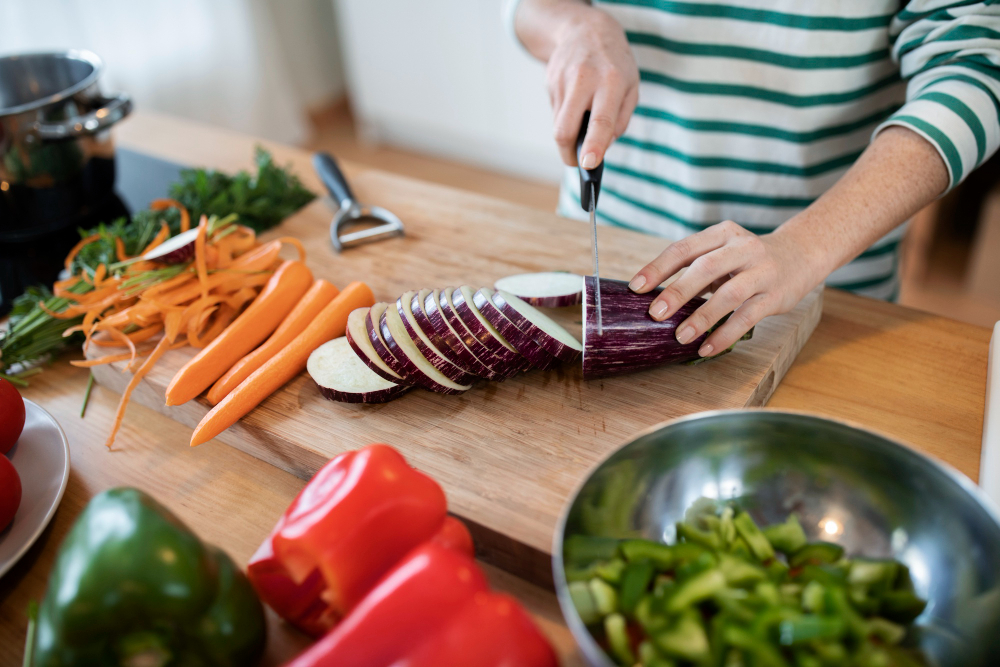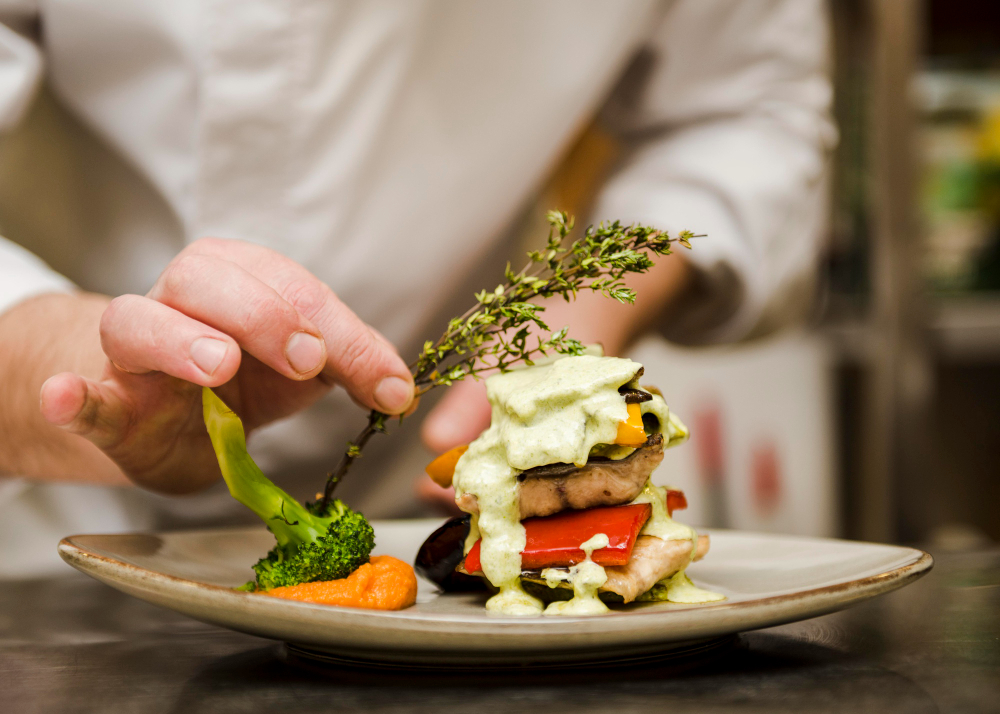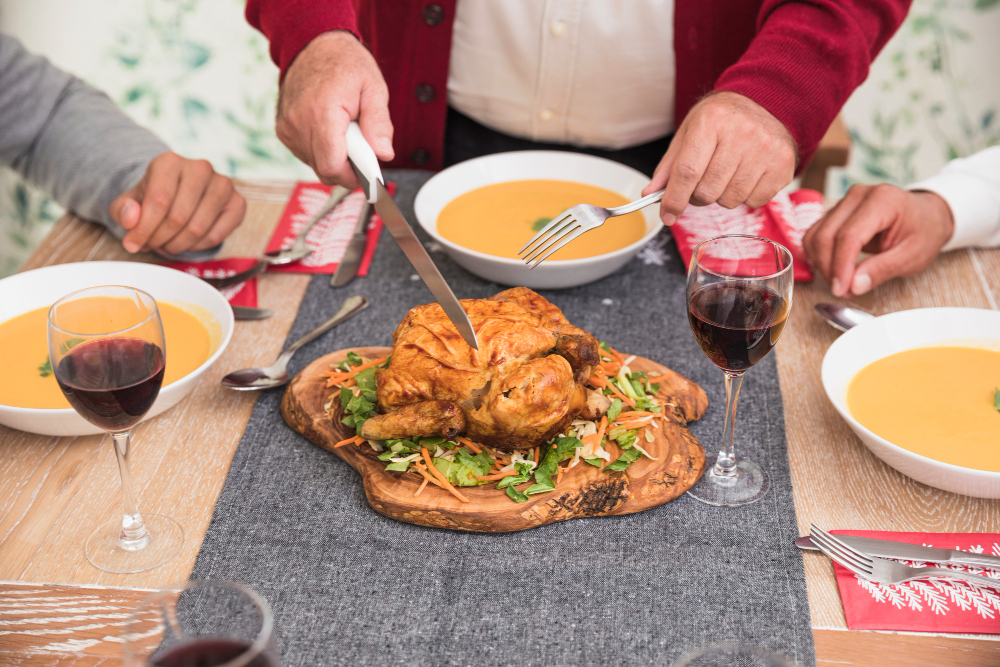Creating restaurant-quality meals in your own kitchen might seem intimidating, but with the right techniques, ingredients, and mindset, you can elevate your home cooking to rival professional culinary experiences. The satisfaction of serving a restaurant-worthy dish to impressed family and friends is well worth the effort, and you might be surprised at how achievable it really is.
Start with Quality Ingredients
Restaurant chefs know that exceptional food begins with exceptional ingredients. While you don’t need to break the bank, investing in a few high-quality staples can transform your cooking:
- Choose fresh, seasonal produce whenever possible
- Buy the best protein you can afford—quality meat, fish, or plant-based alternatives make a noticeable difference
- Keep good quality oils, vinegars, and finishing salts on hand
- Freshly grind spices right before using them
- Use fresh herbs rather than dried when possible
Master Basic Cooking Techniques

Professional chefs spend years perfecting fundamental techniques that home cooks often rush through. Taking time to learn these basics will dramatically improve your cooking:
- Proper knife skills for consistent cutting (which ensures even cooking)
- Understanding heat management and when to use high, medium, or low temperatures
- Learning to season throughout the cooking process, not just at the end
- Mastering the art of deglazing to capture all the flavors from your pan
- Perfecting basic sauce making techniques
Plan and Prep Like a Professional
The smooth efficiency of restaurant service comes from meticulous preparation. Adopt this approach at home by embracing “mise en place”—having everything in its place before cooking begins:
- Read recipes thoroughly and plan your timing backward from serving
- Chop all vegetables, measure ingredients, and organize everything before turning on the stove
- Prepare components that can be made ahead of time
- Have all necessary tools and equipment ready
- Set the table before cooking so food can be served immediately when ready
Focus on Presentation
We eat with our eyes first. Restaurants understand this and put considerable effort into the visual appeal of their dishes:
- Use white plates to make colors pop
- Consider the height, texture, and color contrasts on the plate
- Wipe plate edges clean before serving
- Add thoughtful garnishes that complement the dish’s flavors
- Serve appropriate portions—not too much or too little
Create Layers of Flavor
Restaurant food tastes complex because chefs build depth through multiple flavor layers:
- Start with aromatics like onions, garlic, and shallots as a flavor base
- Use acid (lemon juice, vinegar, wine) to brighten dishes
- Incorporate umami elements like mushrooms, aged cheeses, or soy sauce
- Finish dishes with fresh herbs, a drizzle of high-quality oil, or flaky salt
- Don’t forget texture contrasts—something crunchy, something creamy, something tender
Pay Attention to Temperature
Restaurants serve hot food hot and cold food cold—simple but often overlooked at home:
- Warm plates for hot food
- Chill glasses and plates for cold dishes
- Allow meats to rest after cooking
- Time components to finish simultaneously
- Have proper serving dishes ready
Set the Atmosphere
The restaurant experience isn’t just about food—it’s about ambiance:
- Dim the lights slightly and light some candles
- Play background music that sets the right mood
- Remove distractions from the table (phones, mail, clutter)
- Use cloth napkins and your best dinnerware
- Consider a centerpiece or simple table decoration
Recreate Signature Restaurant Techniques

Certain techniques are hallmarks of restaurant cooking that you can adopt at home:
Pan Sauces
After searing meat, don’t waste those flavorful brown bits (fond) in the pan. Deglaze with wine, stock, or even water, then reduce and finish with butter for a luxurious sauce.
Proper Searing
High heat and patience are key to developing that coveted restaurant crust on proteins. Ensure your pan is properly preheated, pat meat dry before adding it to the pan, and resist the urge to move it too soon.
Strategic Seasoning
Restaurants season at multiple stages of cooking, not just at the end. Season from the inside out (marinades, brines) and the outside in (salt, spices, finishing touches).
Sauce Emulsification
Learn to emulsify sauces for smooth, silky results properly. Slowly incorporating fat into a base creates stable, professional-quality sauces.
Don’t Overcomplicate
Ironically, while restaurant food can seem complex, many high-end establishments focus on simplicity:
- Choose one star ingredient and build the dish around it
- Limit a plate to 3-5 components that work harmoniously
- Perfect a simple technique rather than attempting multiple complicated ones
- Let great ingredients speak for themselves with minimal manipulation
Practice and Patience
Perhaps the most important aspect of cooking like a professional is accepting that it takes time to develop these skills:
- Start with simpler restaurant-inspired dishes before tackling complex ones
- Take notes on what works and what doesn’t
- Taste constantly throughout the cooking process
- Be willing to learn from mistakes
- Develop your palate by paying attention to flavors when dining out
The Secret Ingredient: Confidence
Professional chefs move with purpose and confidence in the kitchen—adopt this mindset:
- Trust your instincts
- Cook with decisive movements
- Taste and adjust without second-guessing yourself
- Remember that even professional chefs make mistakes
- Enjoy the process as much as the result
Conclusion
Creating restaurant-quality meals at home combines technique, quality ingredients, presentation skills, and the right mindset. At Kelsey Holmer Recipes , we believe that with practice and passion, anyone can master the art of gourmet cooking. You don’t need industrial equipment or formal training—just a willingness to slow down, pay attention to details, and enjoy the process. Before long, your home kitchen will become your favorite restaurant, where you control the menu, the atmosphere, and the entire dining experience.









